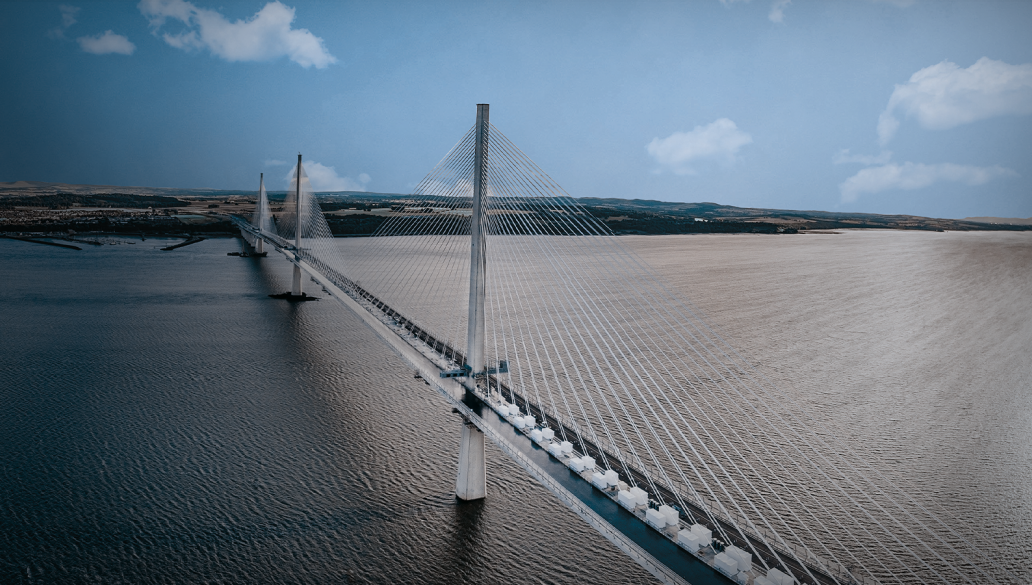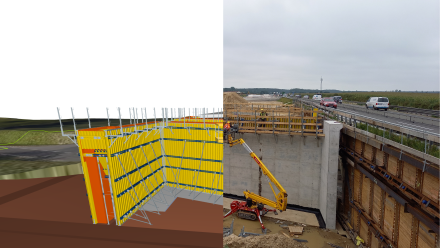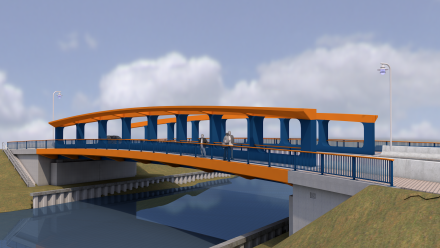Queensferry Crossing
The Queensferry Crossing is one of the largest infrastructure projects in Northern Europe

Facts
Location
Near Edinburgh, Scotland
Nemetschek Group Brands
ALLPLAN
Client
Leonhardt, Andrä und Partner (LAP)
Number of companies involved
Planning: LAP, Rambøll, Gifford und Grontmij
Owner
Transport Scotland
Three centuries of Bridge Building over the Firth of Forth
The Queensferry Crossing near Edinburgh in Scotland is a cablestayed bridge with three pylons over 200 m in height. It is one of the largest infrastructure projects in Europe and benefitted from ultramodern reinforcement planning in 3D thanks to the engineers from Leonhardt, Andrä und Partner (LAP) and Allplan Engineering.
A special kind of infrastructural requirement can be found in central Scotland at the Firth of Forth estuary. Three bridges in the immediate vicinity of each other span an estuary here, which reaches about 80 kilometers inland. The Forth Bridge, a steel bridge from 1890, has served rail traffic at this point. The Forth Road Bridge is a suspension bridge built in 1964 and from the summer of 2017 is to be used exclusively for bus, bicycle, and pedestrian traffic. The new Queensferry Crossing bridge now supplements these two bridges. It will be used for road traffic alone, with two lanes and an additional hard shoulder in each direction. Whilst the Forth Road Bridge was designed and implemented by means of manual drawings on paper, reinforcement and execution plans for the Queensferry Crossing were created three dimensionally in Allplan Engineering.
The middle pylon of the cable stayed bridge was built into Beamer Rock in the middle of the Firth by means of a sheet pile box. The lateral pylons are installed up to 40 meters deep with wedge boxes. The pylons were concreted in an inner and an outer climbing formwork. A riser with up to 200 bar was required to be able to transport the concrete up to the top of the pylons. Floating cranes and transport pontoons were used since the building site was largely located on the open waters of the Firth of Forth. The largest part of the reinforcement was prefabricated in the nearby port of Rosyth and then had to be lifted on site with the tower crane.




